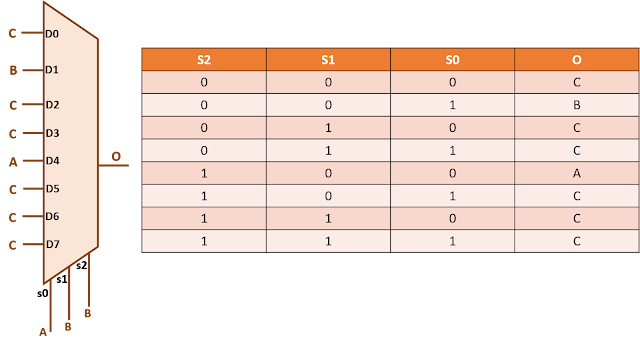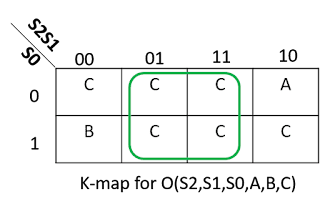Priority multiplexers are common in case one of the inputs is to be prioritized. The reason for this can be either functional or timing. In case of timing being the reason, the most setup timing critical input is connected to the highest priority input. The reason is that the highest priority signal gets the least logic in its path in a priority multiplexer as discussed below. The schematic for a 4-input priority mux is shown in figure 1 below:
In the above diagram, X0 has the highest priority; followed by X1, X2 and X3. A priority multiplexer selects the input if the corresponding select line is "1" and none of the select lines with with higher priority is "1". For example, if S0 is "1", X0 will be selected always. But if S2 is "1", X2 will be selected only if both S1 and S0 are "0".
The logic equation of a priority mux can be written as:
Y = S0.X0 + S0'.S1.X1 + S0'.S1'.S2 X2 + S0'.S1'.S2'.S3.X3 + S0'.S1'.S2'.S3'.S4.X4 + ......
Or, for a 4-input priority mux,
Y = S0.X0 + S0'.S1.X1 + S0'.S1'.S2 X2 + S0'.S1'.S2'.S3.X3
The output of the priority mux is not valid if all the select signals are "0", as we dont know which input to select in that case. That is why, figure 1 shows the D0 of the left multixer as don't care.
How a priority mux differs from a normal mux: In a normal mux, all the inputs have equal priorities, whereas they have different priorities in case of a priority mux.
In the above diagram, X0 has the highest priority; followed by X1, X2 and X3. A priority multiplexer selects the input if the corresponding select line is "1" and none of the select lines with with higher priority is "1". For example, if S0 is "1", X0 will be selected always. But if S2 is "1", X2 will be selected only if both S1 and S0 are "0".
The logic equation of a priority mux can be written as:
Y = S0.X0 + S0'.S1.X1 + S0'.S1'.S2 X2 + S0'.S1'.S2'.S3.X3 + S0'.S1'.S2'.S3'.S4.X4 + ......
Or, for a 4-input priority mux,
Y = S0.X0 + S0'.S1.X1 + S0'.S1'.S2 X2 + S0'.S1'.S2'.S3.X3
The output of the priority mux is not valid if all the select signals are "0", as we dont know which input to select in that case. That is why, figure 1 shows the D0 of the left multixer as don't care.
How a priority mux differs from a normal mux: In a normal mux, all the inputs have equal priorities, whereas they have different priorities in case of a priority mux.















